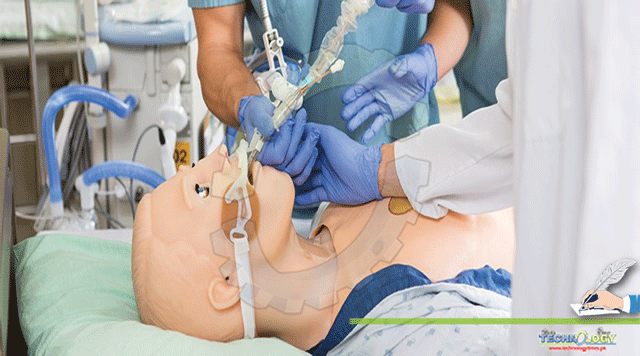How often have you played a scenario in your head multiple times before performing an important task or simply before approaching someone special? Or on an unlucky day wished you had done certain things differently? Well, science doesn’t believe in luck but rather in getting things done.

By Anoosh Fatima
Following this nature, scientists came up with a way to simulate a scenario. Simulation is a technique that allows one to interactively mimic real-world scenarios virtually improving decision-making skills and igniting critical thinking. Several departments have made use of this handy technique from pilots practicing flights from the comfort of the ground to video games reflecting real-life scenarios! Healthcare also relished its share of benefits from this ingenious invention. This article scrutinizes some of the examples of simulation employed in healthcare.
Education
Long before the other educational fields started seeking application-based studies, healthcare institutes have been experimenting with diverse techniques to find the best hands-on experience for upcoming professionals. In the past (even today in some parts of the world), cadavers (preserved human dead bodies) were commonly used by medical students to comprehend the anatomy of the human body and even practice procedures on it when possible. However, with the increased number of medical schools, keeping up with the supply of sufficient cadavers became a difficult task. Arranging optimum conditions for its storage was yet another challenge. On top of that, some religious and cultural institutions raised ethical concerns that further reduced the use of cadavers for learning purposes. Thankfully, the advancement in technology soon filled the void with the use of simulations instead. Simulation technology is categorized on the degree of realism, with low-fidelity mannequins used for learning processes like CPR and high-fidelity ones employed for extensive interaction for example the SimMan 3G which is able to mimic ECG and respond to pain and other stimulants by crying or sweating (Decker, 2020).
Nurses’ Training
Nurses play a huge role in the patient’s management, from simpler roles like venipuncture to more complex ones like catheterization of the urinary bladder. It is crucial for them to be very precise and perfect with their art. Training schools originate back in 1911, but now nurses all over the world mundanely practice the procedures in a lab before applying them to actual patients (Studnicka, 2021). Simulation simply bridges the gap between theoretical knowledge and its practical implications. Educational institutes and authorities have been carrying out long-term research to plan the best simulation techniques and even made it part of the criteria involved in achieving a nursing license.
Drawbacks
Simulation techniques have greatly impacted a patient’s safety outcomes and also helped healthcare professionals to be able to learn at their own pace individually unlike older techniques where physicians learned in groups and had to wait for the preparation of equipment. While it has proved so beneficial, it has its cons. Firstly, as it is a relatively modern technique, there is a general lack of experience and understanding amongst the instructors. Simultaneously, it has increased the cost of education and is out of the reach of many institutes, with conventional methods obsolete, these institutes are unable to compete with the world in terms of efficiency. Lastly, a major cause of concern regarding simulators for the healthcare industry is that they often misappropriate the results, either there’s an unrealistic time delay or an unprogrammed response for example an allergic reaction; practitioners are left flabbergasted when they come across such conditions on real-life patients as they have not developed a reflexive reaction to it during practice. (Costiuc, 2021).
References
Decker, C., & Wolff, S. (2020). Simulation in Healthcare Education: A Systematic Review.
Studnicka, K., & Zalewski, J. (2021). Contexts of simulation in healthcare. Pielegniarstwo XXI wieku/Nursing in the 21st Century, 20(3), 201-209.
Costiuc, N. (2021, March 3). How is Simulation Used in Healthcare? HealthySimulation.com. Retrieved September 16, 2022, from https://www.healthysimulation.com/30774/how-is-simulation-used-in-healthcare/